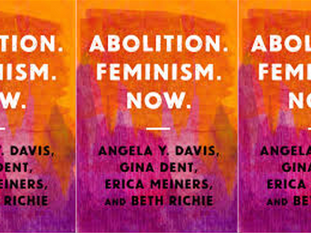Olivia Amplified

The Color Purple by Alice Walker

I’m thrilled to share that my first post on Critical Reads is on The Color Purple!
To be completely honest, this was my first time learning of The Color Purple, both as a book and a movie. I’m so grateful to my professor for recommending this powerful book.
With Critical Reads, my goal is to raise awareness about important novels, especially in light of the increasing movement of censorship in literature. I believe it's essential for everyone to have access to diverse narratives that challenge and inspire us. I would say I’m definitely a part of the “I Read Banned Books” club!
The Color Purple is a must-read for everyone.
Alice Walker’s The Color Purple is more than a novel. It’s a powerful exploration into the journey of a young Black woman living in the early 20th-century South. Celie, the main character, navigates a world of unimaginable challenges. What makes this book truly extraordinary is the breadth of themes it weaves together. Walker manages to reflect on how these themes intersect and impact Celie’s life. This book touches upon themes of identity, gender, sexuality, racial oppression, misogyny, patriarchy, spirituality, community, colonization, discovery etc. What did she not cover?
Here’s why I believe The Color Purple should be on everyone’s reading list:
Offers a Window into Perspective
The novel offers an intimate look into the lives of Black women enduring layers of hardship. The characters' struggles highlight the resilience required to exist in a world that consistently works against them. Reading The Color Purple allows us to see the complexities of the lives of Black women. For those, like me, who have not experienced *misogynoir, it deepens perspectives that encourage compassion and awareness.
*Misogynoir- refers to an intersectional form of oppression: the prejudice against Black women
Utilizes the Power of Sisterhood as a Form of Resilience, Resistance, and Self-Discovery
The most beautiful part about this book is how women help other women. Walker uses the bond of sisterhood as a compelling solution to resist oppression as an act of non-violence. The women in this book help eachother fight against domestic abuse, racism, gender oppression, economic oppression, self-worth and so on! We see the main character, Celie, grow and reclaim her voice. Her relationships with other women, particularly with Shug Avery and Sofia, show how the bonds of sisterhood help us discover parts of ourselves we never knew existed. It’s a message that speaks to anyone who’s ever felt limited by the world’s expectations or struggled to find their voice. The friendships become a form of resistance against the oppressive forces surrounding these women. Walker shows us how relationships built on trust, vulnerability, and solidarity can be the solution to the social systems that seek to divide us. It’s a serious reminder of how essential community and support are to our own journeys.
Encourages Intersectional Awareness
The novel is the epitome of *intersectionality. Viewing Celie’s life and those around her helps readers see how oppression often operates on multiple levels. The Color Purple is a profound introduction to intersectionality and shows how the layered experiences of race, gender, and class shape the characters' lives. This storytelling encourages us to acknowledge and respect the diverse and intersecting identities within ourselves and others and urges a more inclusive perspective on social issues.
*Intersectionality- the cumulative way in which the effects of multiple forms of discrimination (such as racism, sexism, and classism) intersect
All in all, I hope you find this book as impactful as I did. I’m looking forward to watching the movies! Friend me on GoodReads! I’m always looking to grow my book club.
With gratitude,
Olivia
